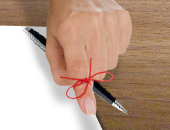
Vital Details
How will you perfect the writing process? Below are the sections that make an effective grant proposal:
1. Intro. Funding sources always look for info about the fund-seeking group. This section must contain organizational history, past and current programs, achievements, and a list of key staff and their roles. Through this, a funding source can get a glimpse of your identity and credibility as a grant seeker.
2. Problem Statement. This section defines and outlines the basic problem or issue that you intend to resolve or address through your project. You need to be specific and concrete when writing this one. Do not assume that your reader knows and grasps the problem your community is facing. Instead of staying on the negative side of the situation, you must portray it as a challenge that you can overcome through your program.
3. Goals. Cite the things that you hope to fulfill through your project. Also, cite certain activities that you will need to perform to reach your goals. Make this section clear; just express your intentions in an honest way.
4. Budget Plan. This section is one of the most vital parts of your proposal. Make sure to be specific and realistic when requesting an amount that you need to spend for your project. It will be better, for instance, to request for a precise amount of $9,769 rather than ask for a maximum amount of $10,000. Most of all, tell that you will use the funds properly.
5. Project Activities. As soon as you have determined the direction of your project, you have to explain how you’re going to achieve your plan. This section cites the detail of certain activities that you will carry out, as well as the key persons to get involved in each activity. It is much better that you present a table that contains your timeline of activities.
6. Evaluation Plan. This section will direct to and measure the success of your proposed project. This is vital for it allows both the funding source and you to see if the group’s work is heading toward the right direction. Through it, funders can see the weaknesses that need to be corrected.
Other Things to Prepare
Make a list of attachments. This is to guide the reader on the attached files that you sent along with the formal grant request. This often includes a budget plan detailing your anticipated income and expenses both for your project and your organization as a whole, a copy of the letter from the IRS showing your tax-exempt 501(c)(3) status, a list of your board of directors including your affiliations, and letters of support, among others.
More on Writing a Grant Proposal
Making a grant request is no easy task. You may not perfect it the first time you do it. It takes patience, passion, and determination before you can come up with a good written request.
If you still find it hard to make one, seek expert grant writing service.




